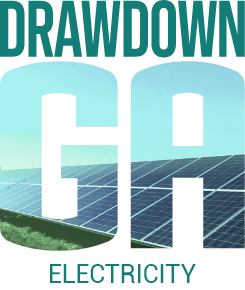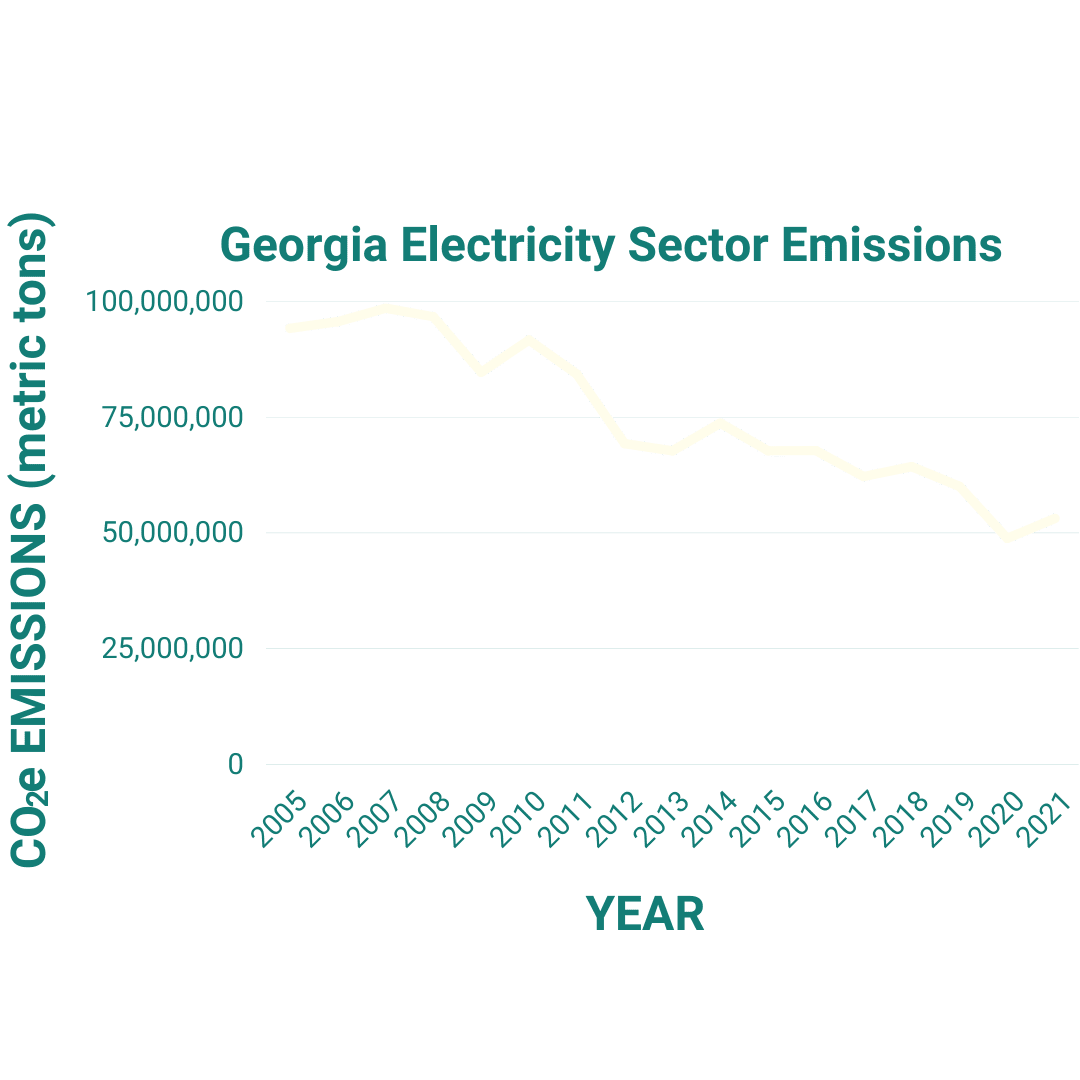Head over to the Carbon Reduction Visualizer to explore data on Georgia’s greenhouse gas emissions. You can see how emissions fall if we scale solutions to ambitious, but achievable, levels.
Electricity

Here’s the deal
Accelerating Georgia’s progress to renewables means increasing solar and putting waste heat to work in co-generation plants, capturing methane from landfills and turning it into power, and shifting our electricity usage to off-peak.

Cogeneration
Coge...
Cogeneration plants capture heat from industrial processes to warm buildings, manufacture products, or create electricity. Georgia’s textile, pulp and paper, food processing, lumber and other wood industries can help us reduce emissions by 1 million metric tons if 16 factories in the state capture waste energy to generate at least 25 MW of electricity each.
Demand
Response
Dema...
If more Georgians reduce electricity usage during “peak load” periods, we can reduce emissions significantly. If 187,000 households shift 10% of their peak to off-peak demand, we’ll eliminate 1 million metric tons of carbon emissions.
Rooftop Solar
Roof...
Solar panels combined with battery storage means buildings do not have to rely on gas- and coal-fired power that comes over the wires. By 2030, we could reduce emissions by 1 million metric tons if 295,000 new 5 kW solar roofs are installed.
Large-Scale
Solar
Larg...
Sometimes called solar farms, these large-scale installations feed electricity into the grid to power homes, schools, business and industry. By 2030, we could reduce emissions by 1 million metric tons if 10 additional 100 MW utility-scale solar installations and 36 additional 5 MW community solar systems come online.
Landfill
Methane
Land...
Landfill gas (methane) can be captured and put to use, preventing pollution and generating electricity and natural gas. We could reduce emissions by 1 million metric tons if 4 additional landfill facilities are retrofitted to house 5 MW gas-to-energy systems.
Cogeneration
Cogeneration plants capture heat from industrial processes to warm buildings, manufacture products, or create electricity. Georgia’s textile, pulp and paper, food processing, lumber and other wood industries can help us reduce emissions by 1 million metric tons if 16 factories in the state capture waste energy to generate at least 25 MW of electricity each.
Demand Response
If more Georgians reduce electricity usage during “peak load” periods, we can reduce emissions significantly. If 187,000 households shift 10% of their peak to off-peak demand, we’ll eliminate 1 million metric tons of carbon emissions.
Rooftop solar
Solar panels combined with battery storage means buildings do not have to rely on gas- and coal-fired power that comes over the wires. By 2030, we could reduce emissions by 1 million metric tons if 295,000 new 5 kW solar roofs are installed.
Large-Scale Solar
Sometimes called solar farms, these large-scale installations feed electricity into the grid to power homes, schools, business and industry. By 2030, we could reduce emissions by 1 million metric tons if 10 additional 100 MW utility-scale solar installations and 36 additional 5 MW community solar systems come online.
Landfill Methane
Landfill gas (methane) can be captured and put to use, preventing pollution and generating electricity and natural gas. We could reduce emissions by 1 million metric tons if 4 additional landfill facilities are retrofitted to house 5 MW gas-to-energy systems.
Here’s where we are
Electricity is Georgia’s second-largest source of greenhouse gas emissions. According to the Drawdown Georgia GHG Emissions Tracker, electricity sector emissions have decreased in recent years as coal plants were replaced with cleaner sources. In 2021, the electricity sector was responsible for about 53 million metric tons of GHG emissions.

Here’s where we are
Frequently Asked Questions
Does solar create jobs in Georgia?
The Solar Energy Industries Association found that there were more than 5,600 solar jobs in Georgia as of early 2025, giving the state a solar jobs ranking of 14th in the nation.



